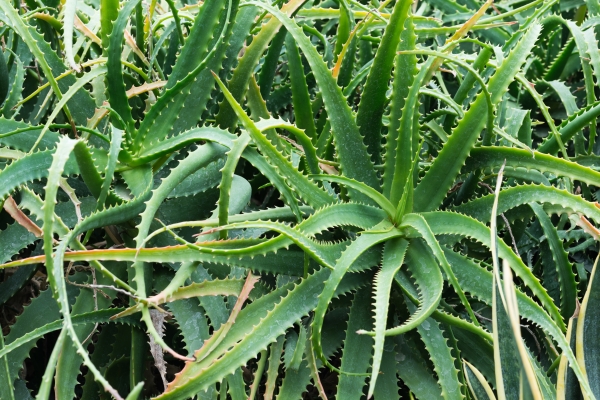My father named me, she thinks to herself as she sways in motion with Hajj’s stride and tears slip down her face. Above her, in a sky full of stars, a new crescent moon sparkles over the dunes. This is Wadd, the great moon god, who brings water and fertility to her people, the Banu Kalb. She smiles softly and kisses her hand in a gesture of homage, remembering the last time she sat near her father in the firelight and he told her the oft-repeated story of her birth.
“The palm dates were gone and the winds were terrible” He would begin. “Though I have traveled the route to Dumat al Jandal since my youth, the winds had changed the shape of the dunes and the stars were obscured with blowing sands. I lost my way. Your mother was delicate after your brother’s birth and no one believed she would bear another child. She was delirious and moaning when the camels ran dry of milk. I mixed the sibr – the sacred aloe powder – into the last of our water rations, and I gave this to your mother and brother to give them strength. I set up the tent and wondered if our camels would survive the breaking day. Your mother gave birth to you the next evening, kissed your head, smiled at me, and died. With her last breath, the wind stopped and everything fell silent. I carried you out under the stars, held you up to the new moon, and gave you your name. ‘This is Suwa’ I said to Wadd. ‘This is my daughter who will be as beautiful and virtuous as the goddess of the night sky for which she is named.’ I knew then that Wadd approved and would watch over you because I heard the horses. It was your uncle, riding out to find us.”
Now, Suwa follows her brother over the same route her father and mother traveled 16 years ago to the Oasis settlement at Dumat al Jandal. She and her family will bury her father there before the sun sets tomorrow according to tribal custom. In the early morning, she will go with her family to the temple of Wadd and she will place an offering of aloe leaves and camel’s milk before the idol. Then, after the burial, she will plant aloes on the grave as a symbol of her willingness to endure with bravery the loss of her beloved father.

The nomadic Bedouins of the Arab world have fascinated me since childhood because of their love of horses, falcons, and camels, and because of the freedom conveyed by their wandering desert lifestyle. They navigate at night to avoid the sun’s heat using only the contours of sand dunes and the stars for guidance. Sand dunes change shape based on the direction of the winds that form them, so desert navigation can be tricky when it’s windy.
I’ve set this story around 375-425 CE during the reign of Mavia (also translated as Mawia, Mawai, or Mawaiy) and before the raise of Islam because woman where held in high regard during this period. Mavia was the great Syrian warrior queen who led Bedouin tribes of the region to war against the Romans (and kicked Roman butts!).
Our heroine, Suwa, is part of the Banu Kalb tribe, a nomadic people of Queen Mavia living in the lands around the desert oasis of Dumat al Jandal in what is now Northern Saudi Arabia. Dumat al Jandal was famous for a temple housing a giant sculpture of Wadd, the moon god who was the particular idol of the Banu Kalb people. Wadd was the ruler of the night sky and believed to be the source of water, fertility, and the flourishing of date palms – an important food source. Wadd embodied the Bedouin concept of muruwwa or masculinity, which exemplified courage, bravery, and a deep sense of loyalty and love towards one’s family and friends. Wadd’s consort was Suwa, the goddess of the night who personified womanly beauty, virtue, and the feminine aspects of the natural world. Offerings of camel’s milk, aloes, and kissing one’s hand upon seeing the moon were practices used in Wadd’s worship. A slim waxing or waning crescent, and snakes are his symbols.
A lovely Bedouin practice is to plant aloes over the grave of a friend or family member. The aloe symbolizes patience. It affirms that one is willing to face loss, change, or grief with bravery. All over the Arab world, you’ll find aloes planted on gravesites. You’ll also find aloes suspended in the doorways of homes to protect the household from evil influences. This practice began in ancient Egypt where aloe was used as part of embalming practices and to guide the spirits of the dead to the otherworld.
It is not difficult to understand why aloe is associated with the moon in Arabic cultures (and many other cultures where it grows). It has thick, fluid-filled leaves, a cooling texture, a translucent color, and a mildly bitter aroma. It survives harsh, dry, windy and hot landscapes by maintaining moisture in a webbed inner vein system that prevents evaporation. The name, aloe, originates from the Arabic word, “alloeh” meaning bitter.
Bedouins still prize succulent aloe vera plants (A. barbadensis, A. indica, A. perfoliata var. vera and A. vulgaris) because they provide much needed moisture and nourishment to both humans and animals in the desert. Bedouins have long prepared sibr (also called sabbar), a powder made from aloe leaves. Woman crush the fresh aloe leaves with their clean bare feet and then place the pulp in goatskin bags to dry in the sun. The resulting dark brown powder is easy to transport and mixed into water for a fortifying drink.
References to aloe date back to the earliest civilizations. The Sumerians described its medicinal properties for burns and internal issues on a clay table that dates to 2100 BCE. The famous Egyptian Ebers Papyrus (1550 BCE) calls it a plant of immortality and outlines it’s use as a cosmetic agent to soften and beautify the skin, for embalming practices, and as a talisman for dead pharaohs to protect them in the afterlife.
The Greek historian, Dioscorides (40-90 CE) notes aloe pulp as useful for wound healing and maintenance of healthy skin. The Greeks believed it prevented hair loss and so rubbed it on their scalps. Herbalists of the time prescribed it for constipation, insomnia, hemorrhoids, headaches, and mouth and gum diseases. Legend has it that Alexander the Great (356 – 323 BCE) conquered Madagascar so that his army would have a good supply of aloe pulp for wound healing. Knights of the Templar (1129-1312 CE) used aloe pulp in a drink with palm wine and hemp to promote strength and longevity during the Crusades.
On the next new moon crescent, buy yourself an aloe plant in celebration. Modern pagans advise the placement of small aloe plants around the house to sooth your spirit when it is irritated or restless. I find aloe plants particularly supportive when I’m struggling to accept change. Like Suwa’s aloes, planted on the grave of her father, they remind me to face my losses with bravery and patience.

